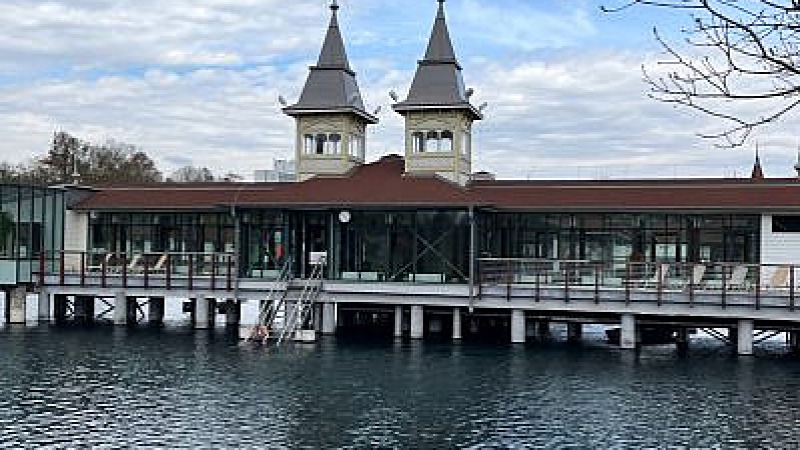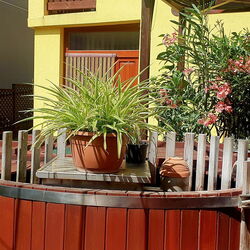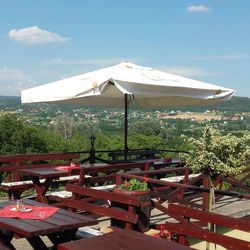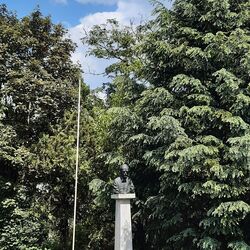The IMTM 2023 – International Mediterranean Tourism Market was held two months ago in Expo Tel Aviv for the first time after COVID. The exhibition was a success. Endless booths and representations of both countries and private tourism providers alike. Walking between the cubicles and meeting hundreds of professionals, I suddenly noticed a small modest counter in a remote corner with the Hungarian flag. There I met Petr Ostrovkin, an impressive businessman with his intrepetor. I was curious about the product he was trying to market – a hotel in Hungary he owns on a small lake I never heard of. Petr invited me to visit and within a few weeks I found myself spending an incredible time by Europe’s largest thermal basin – lake Hévíz, chick to chick with Lake Balton.
There I investigated, discovered and experienced – why do Hungarians desire top thermal baths so much. Or, is it true that Hungary is indeed a “bathing world-power”. The explanation is rather straightforward – history, tradition and geography are all mixed, like a traditional Jewish Cholent.
The Romans that ruled in ancient Hungary left first their famous mark here. They had bathing and cleaning habits. Bathing was an important part of their lifestyle, which meant refreshing the body and soul. They built baths in this region, mainly for their military forces. Several private baths were also framed by wealthy Romans in their mansions. It is believed that the Roman healers built separate bathing complexes for those who were in poor health condition.
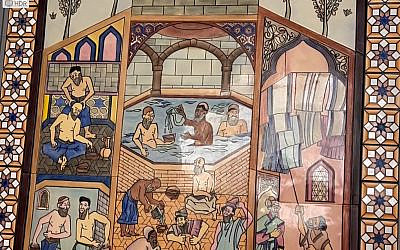
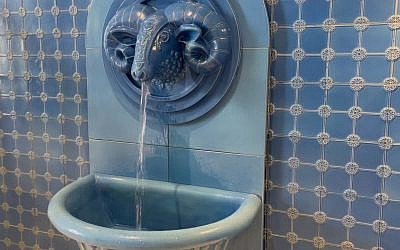
However it is believed that the Hungarian bath culture started flourishing with medieval Turkish rule. The Ottoman Empire, historically the Turkish Empire, controlled much of southeast Europe, including Hungary. They are the ones that lay down the foundations of thermal baths. The Ottomans also introduced people to the habits of their wellness treatments. Massages, body creams and oils. The Turks valued bathing as both a cleansing ritual and social gathering.
The Hungarians were doubtful. Only the Turks were allowed to use the baths during the day. Curious Hungarians only went to the thermal baths at night-time, especially in Budapest that was and still is a city of bathing power. The rest is history. Over the years these baths became part of a balanced life culture in Hungary. Bearing in mind that the country has no access to an ocean or a sea, relying on Lake Balaton for recreational needs, local baths flourished. The neighbors in Austria, once part of the joint dual Monarchy under the name Austro-Hungarian Empire, similarly love thermal baths .
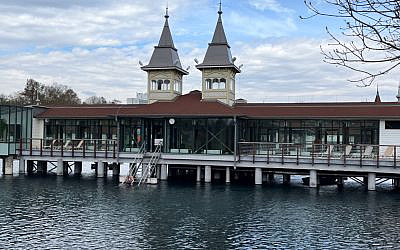
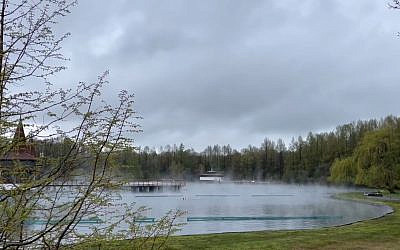
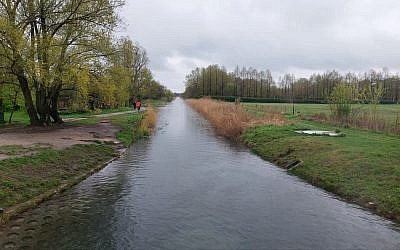
No wonder the small Lake Hévíz, Europe’s largest thermal basin is an extremely popular destination – a two hours drive, either from Budapest or Vienna. It is 38.5 meters deep, with 410 liters per second water flow rate and biologically volcanically active – a natural thermal lake with magical health capabilities. Some call it the fountain of life. Since 1795 these healing waters helped people to recover and regain their strength. Most visitors return home refreshed and rejuvenated. Experts indicate that the chemical ingredients of cold and hot water springs, with 40 degrees of sulphuric medicinal water here, are richer than those in thermal baths in Budapest.
Hévíz is where Petr Ostrovkin’s hotel is. He hopes Israelis will in time flock to his shimmering estate. His Lotus Therme Hotel & Spa offers 232 rooms and suites and is an ultimate destination for a relaxing and therapeutic vacation. The hotel is located in a gigantic natural park within walking distance to Lake Hévíz. This walk is rather surreal along a small creek with steam water coming from the lake. Our visit was just recently but the temperatures were low and a constant drizzle dominated our stay. Endless steam evaporates as the water temperature is very high.
Guests may enjoy Lake Hévíz mineral water reaching the spa via pipes. Definitely the most rewarding experiences one can enjoy here. Lotus Therme is a pampering traditional hotel. A variety of different indoor pools in contrasting water temperatures are offered. The great jacuzzi was the strongest I have ever experienced. The main round pool is heated, but does not contain healing water. Pouring rain while your body is soaked deep in hot water is just paradise. We loved our morning swim in this well maintained pool. A unique experience in any weather conditions. The wellness spa offers a variety of treatments with Lake Hévíz products, however we did not experience them. The pampering pools were just fantastic.
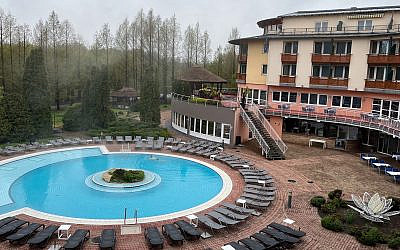
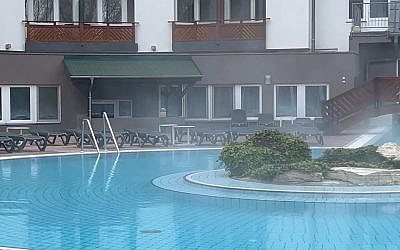
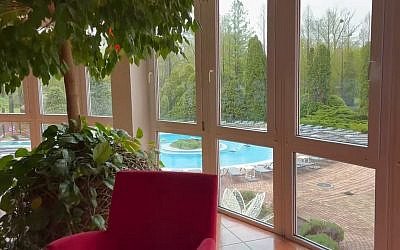
Lotus is the key element here as this water flower really blossoms on this never surprising natural wonder. Apparently they like the volcanic water and always thrive in warm water with a need room to grow. The lake provides the perfect environment and the hotel wisely promotes this unique phenomenon as a marketing tool in its logo and with endless art creations all over the facilities.
Hungarians and Austrians might carry a mosaic of a historical ambivalent relationship, but both people surly adore Lake Hévíz. The majority of guests in the hotel originate from those countries that share love for thermal baths. Lotus Therme Hotel & Spa is offering both food and entertainment with this fact in mind. Pleasant veteran General Manager Attila Fulop is heading skilled team members that work here for many years. Dressed with formal clothes they all recognize the guests who keep returning here. Loyal customers are the best proof for success. The menu at dinner is different each evening and the variety is one of the most generous I have seen. The bar is crowded each night and live dancing with different musicians each day are offered here. Guests of all ages are actually dancing. General Manager Fulop knows his work. A dream of a good hotelier is to keep his guests in its premises and not looking for alternatives elsewhere.
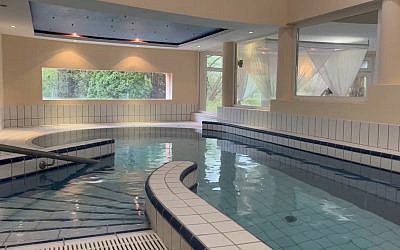
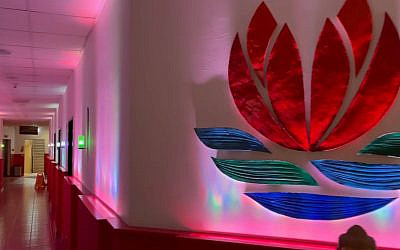
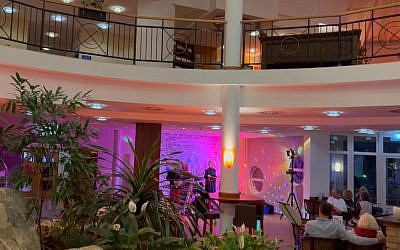
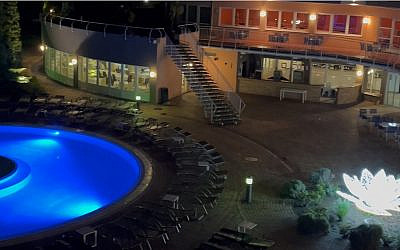
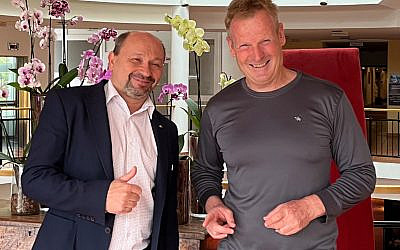
One question remains. Will Israelis flock to Hévíz? Hamat Gader hot springs site in the Yarmouk River valley, used since the classical antiquity, is one of the most popular attractions for Israelis. With that in mind and the endless daily flights from Ben Gurion airport to Budapest, the potential is certainly there. Especially in winter when the flight costs are rock bottom. Hévíz here we come.

